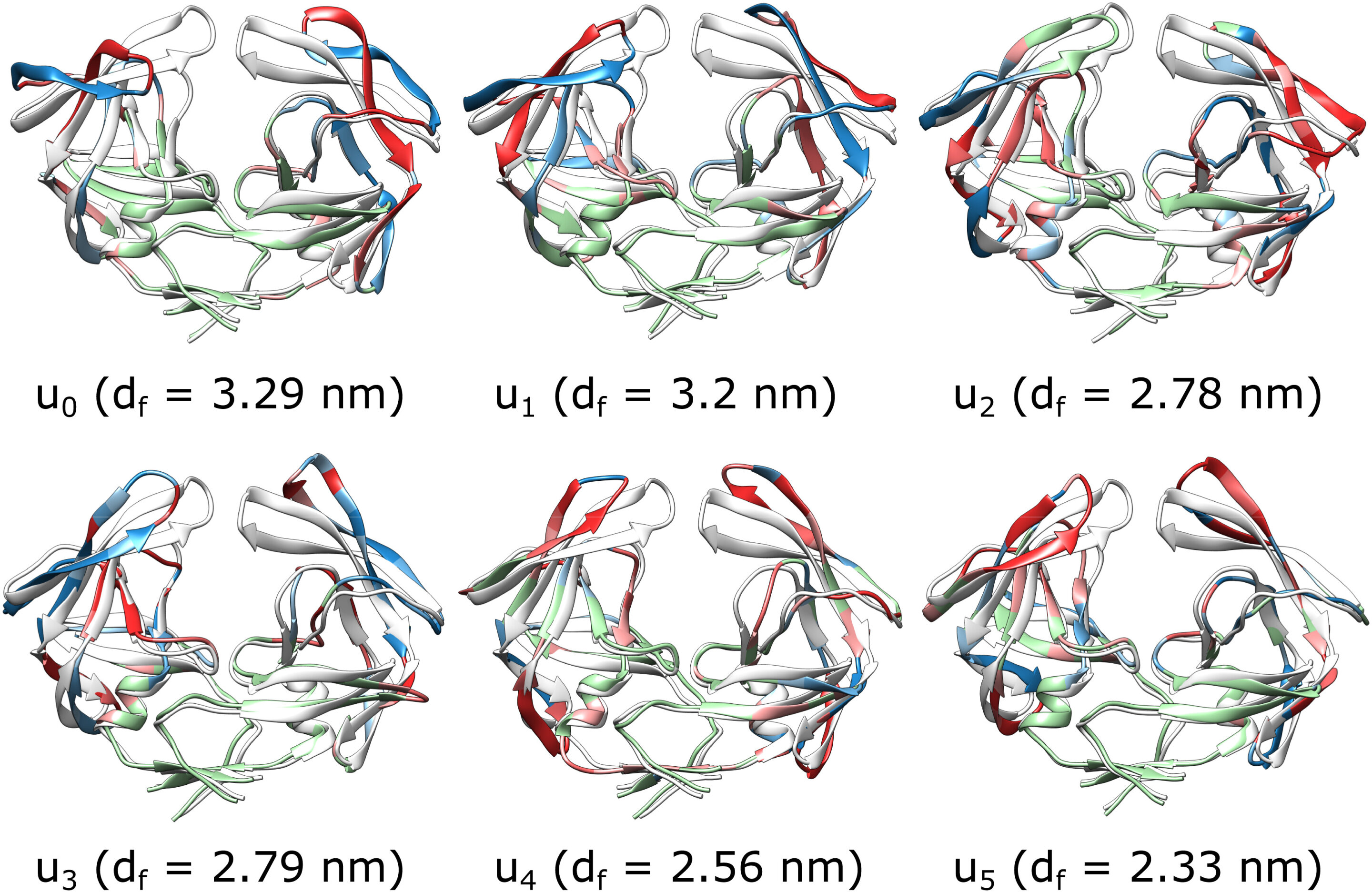Every disease is characterized by its protein foundation.
For diseases like HIV, variations in protein structure play a crucial role in the virus’ ability to infect cells.
Researchers at the University of Illinois Chicago (UIC) leveraged the powerful Theta supercomputer at the U.S. Department of Energy’s (DOE) Argonne National Laboratory to discover the key factors that control a specific structural change in HIV protease, an essential viral protein. This structural change, known as a flap opening, occurs when the virus binds to other molecules such as antiviral drugs. Understanding this change is critical for drug development.
The Theta supercomputer, located at Argonne’s Leadership Computing Facility (ALCF), an open facility for the global scientific community, was instrumental in this research.
“Proteins are the building blocks of life and hold the answers to most biological questions,” said Ao Ma, associate professor of Biomedical Engineering at UIC. “Structure determines function when it comes to proteins. However, proteins have multiple functional structures, and the transitions between these structures dictate how they work.”
In this study, Ma and his students conducted molecular dynamics simulations on Theta, collecting data that they analyzed using a mathematical technique based on Newton’s second law, which states that force equals mass times acceleration.
While proteins are in constant motion, Ma aimed to identify the specific factors within the protein that governed its structural change. “Since proteins are large molecules with thousands to hundreds of thousands of atoms, constantly in motion, it’s important to simplify the problem and determine which components of the motion dictate the overall structural evolution,” explained Ma.
Ma’s research focused on using coordinates to describe protein movement.
Coordinates serve as values that describe the position or location of an object in a specific space. In a 3D space, such as our world, three coordinates (x, y, and z) are used to define a point’s location. Here, x represents horizontal position, y represents vertical position, and z represents depth. Coordinates enable us to understand and describe the arrangement and movement of objects within a given space.
Coordinates can also be described in relation to each other, known as internal coordinates. Internal coordinates focus on the distances between atoms, the angles formed by the bonds connecting them, and the rotation of groups of atoms around these bonds. These internal coordinates form the foundation of the reaction coordinates investigated by Ma and his students.
“While there are thousands of coordinates involved in the movement of HIV protease, we were able to identify the six reaction coordinates that completely determine its structural changes,” said Ma.
The reaction coordinates identified by Ma are combinations of dihedral angles, which are internal angles formed by four atoms connected in a zigzag pattern by three bonds.
“Imagine a line of four atoms connected by three bonds, like beads on a string. The first three atoms form a triangle, creating a plane, while the last three atoms form another triangle, creating a second plane,” Ma described. “The dihedral angle represents the angle between these two planes and helps describe the rotation or twisting of the molecule around the central bond connecting the two planes.”
By determining the specific combination of dihedral angles that serve as reaction coordinates, scientists gain a clear understanding of how the flap opening occurs. Ma believes this breakthrough will contribute to a better understanding of the molecular mechanisms behind the virus and potentially lead to new strategies and targets for drug discovery.
The study titled “Exact reaction coordinates for flap opening in HIV-1 protease” was published online on December 2, 2022, in the Proceedings of the National Academy of Sciences.
More information:
Shanshan Wu et al, Exact reaction coordinates for flap opening in HIV-1 protease, Proceedings of the National Academy of Sciences (2022). DOI: 10.1073/pnas.2214906119
Citation:
Scientists use supercomputer to detail HIV protein mechanism crucial for drug development (2023, June 19)
retrieved 19 June 2023
from https://phys.org/news/2023-06-scientists-supercomputer-hiv-protein-mechanism.html
This document is subject to copyright. Apart from any fair dealing for the purpose of private study or research, no
part may be reproduced without the written permission. The content is provided for information purposes only.



